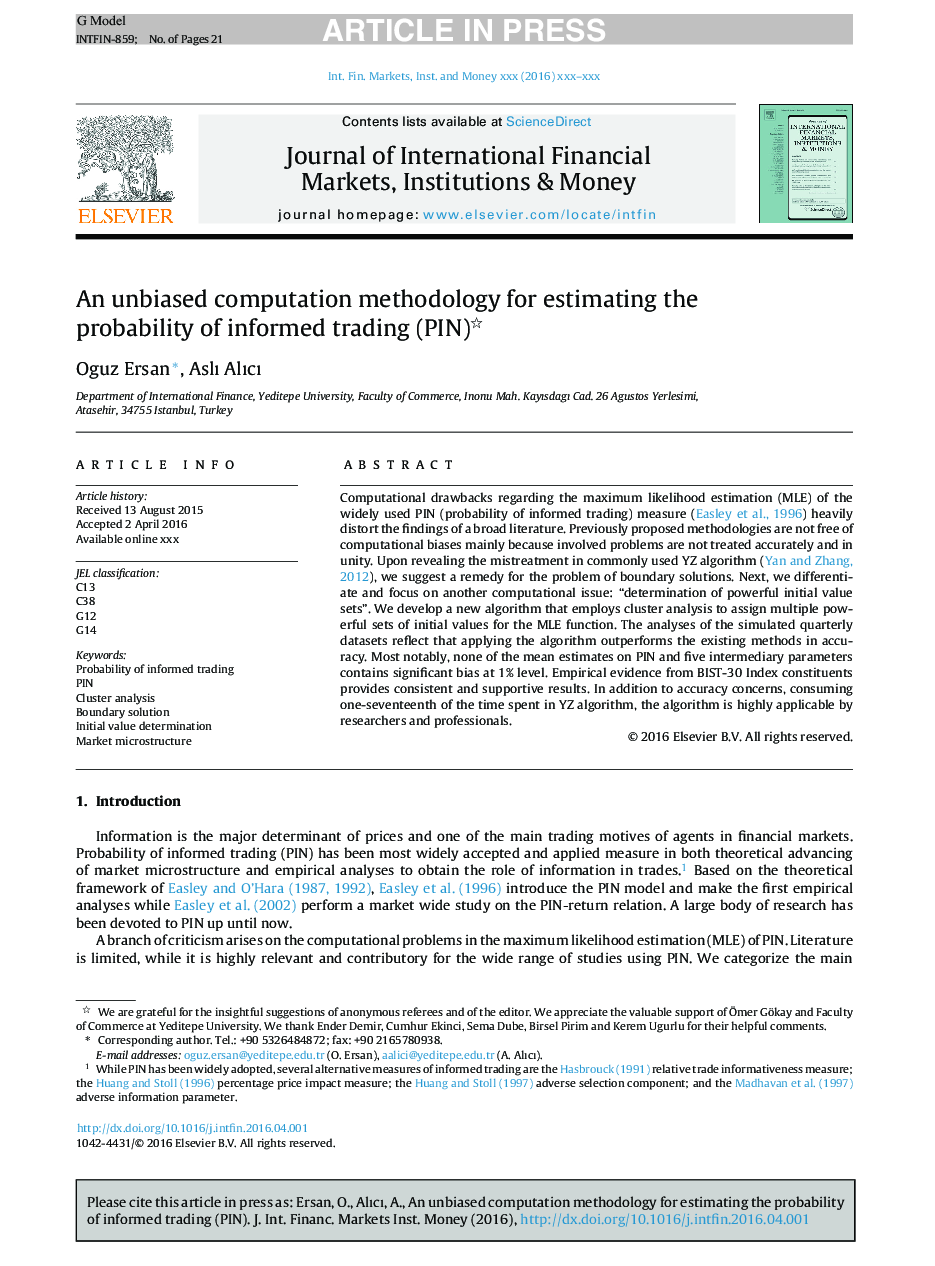| Article ID | Journal | Published Year | Pages | File Type |
|---|---|---|---|---|
| 7364479 | Journal of International Financial Markets, Institutions and Money | 2016 | 21 Pages |
Abstract
Computational drawbacks regarding the maximum likelihood estimation (MLE) of the widely used PIN (probability of informed trading) measure (Easley et al., 1996) heavily distort the findings of a broad literature. Previously proposed methodologies are not free of computational biases mainly because involved problems are not treated accurately and in unity. Upon revealing the mistreatment in commonly used YZ algorithm (Yan and Zhang, 2012), we suggest a remedy for the problem of boundary solutions. Next, we differentiate and focus on another computational issue: “determination of powerful initial value sets”. We develop a new algorithm that employs cluster analysis to assign multiple powerful sets of initial values for the MLE function. The analyses of the simulated quarterly datasets reflect that applying the algorithm outperforms the existing methods in accuracy. Most notably, none of the mean estimates on PIN and five intermediary parameters contains significant bias at 1% level. Empirical evidence from BIST-30 Index constituents provides consistent and supportive results. In addition to accuracy concerns, consuming one-seventeenth of the time spent in YZ algorithm, the algorithm is highly applicable by researchers and professionals.
Related Topics
Social Sciences and Humanities
Economics, Econometrics and Finance
Economics and Econometrics
Authors
Oguz Ersan, Aslı Alıcı,
